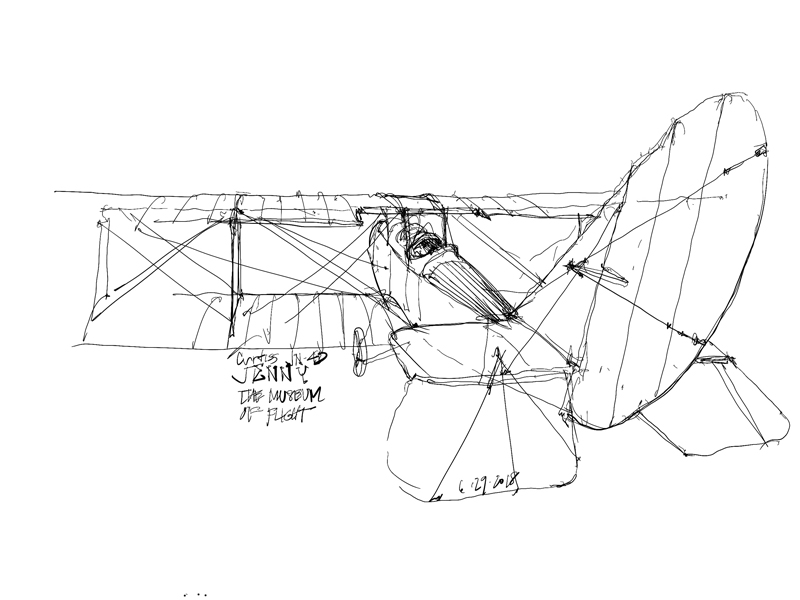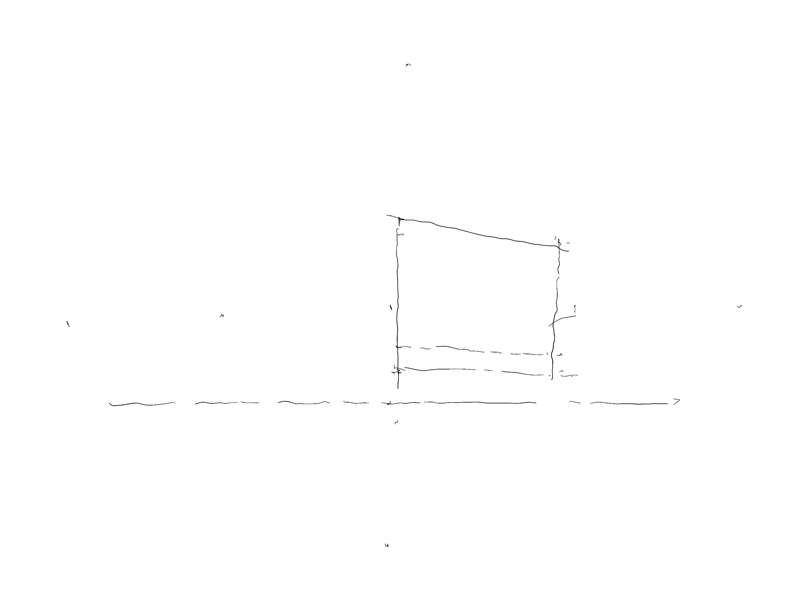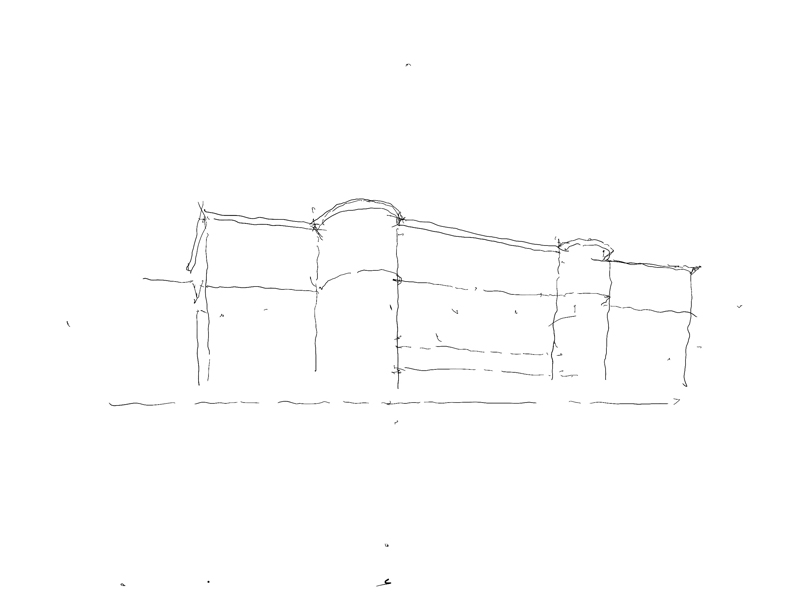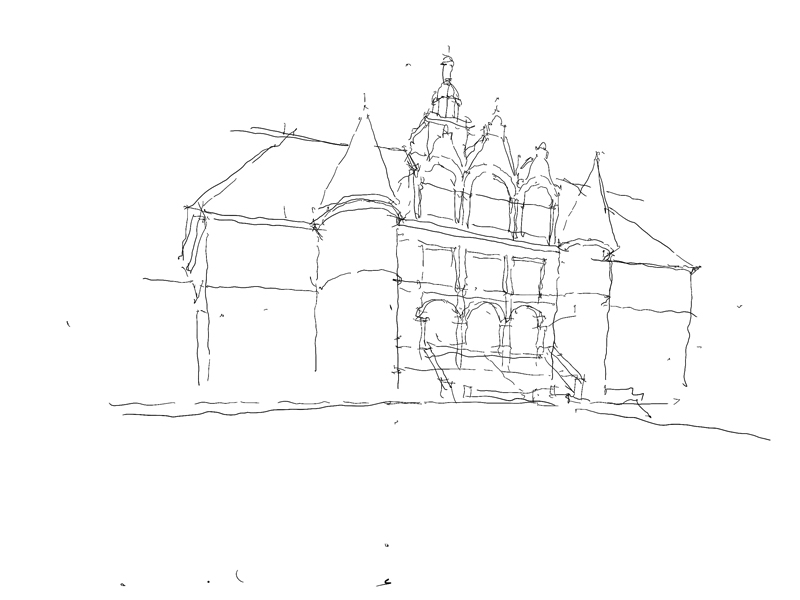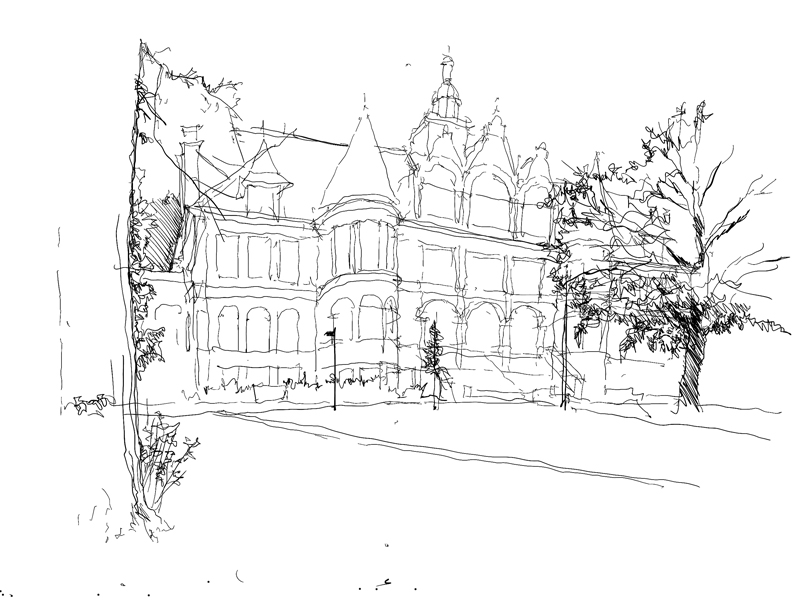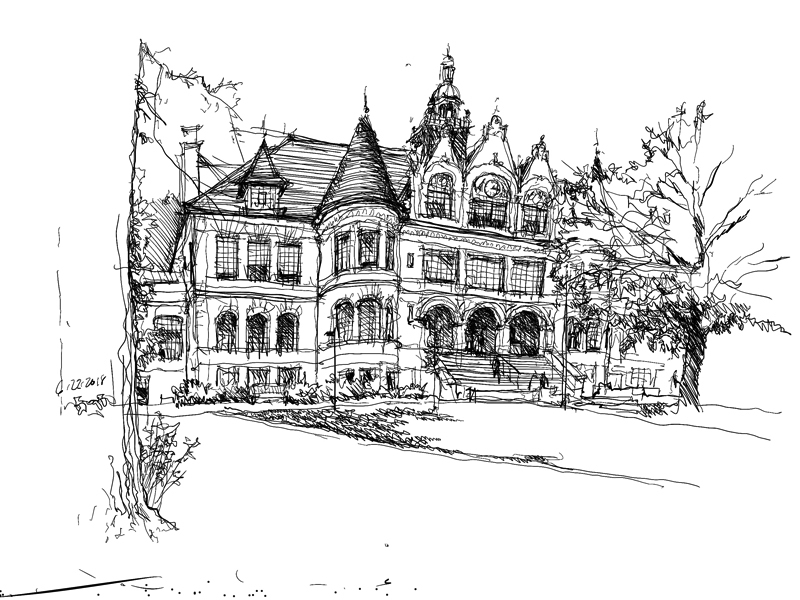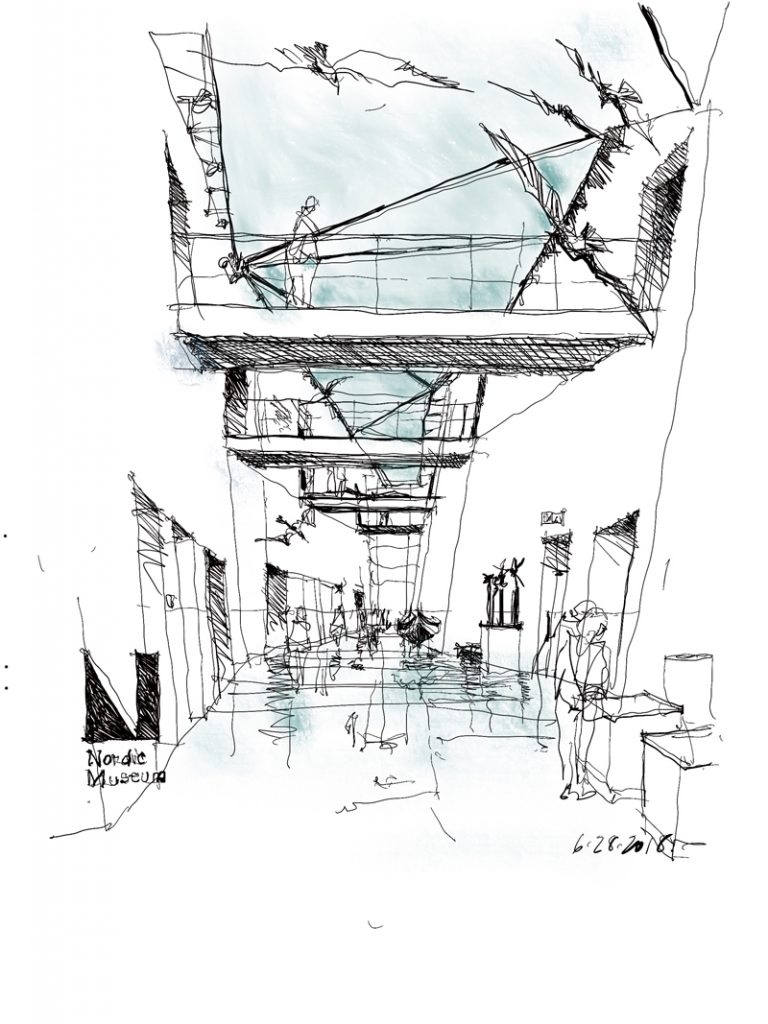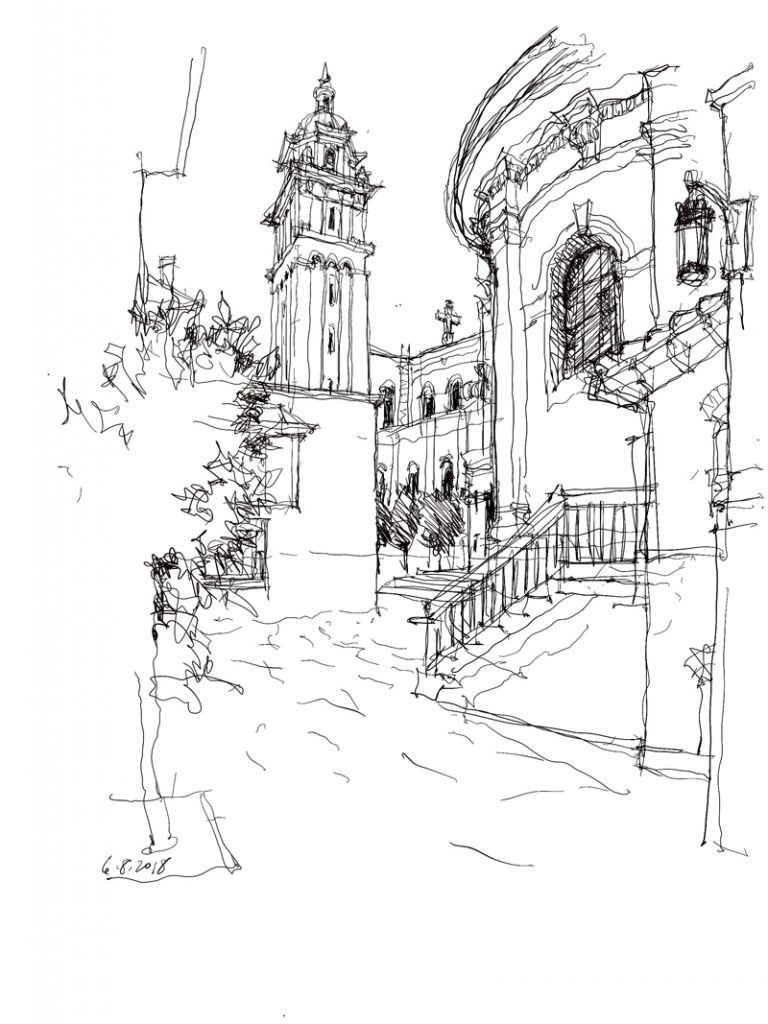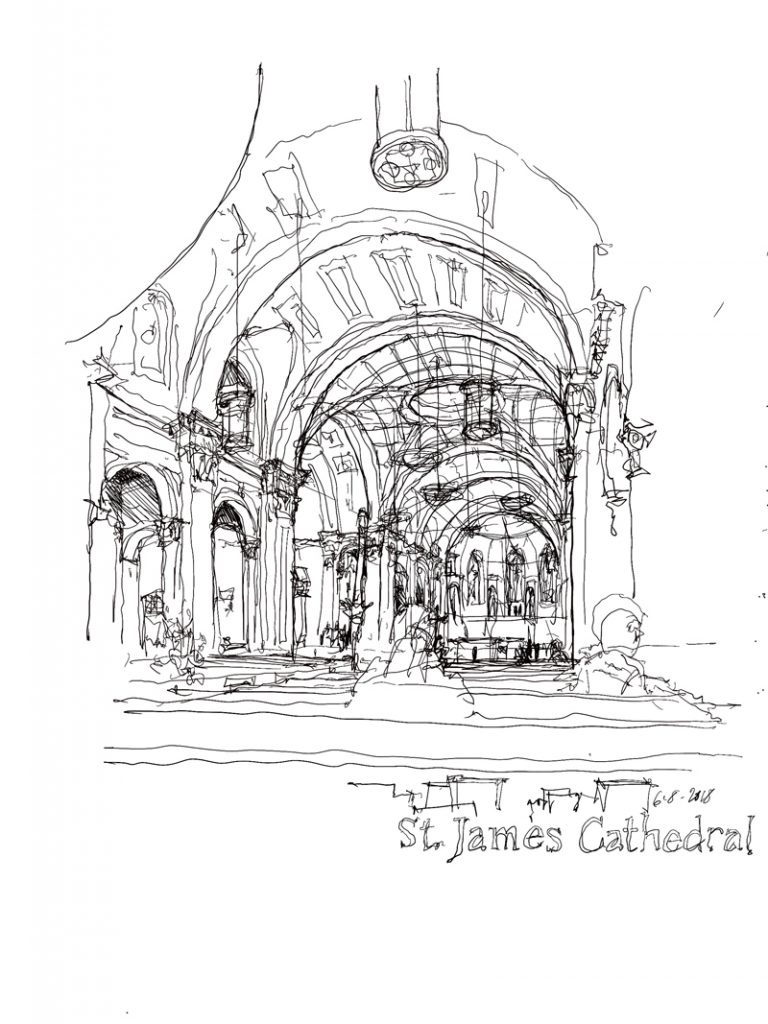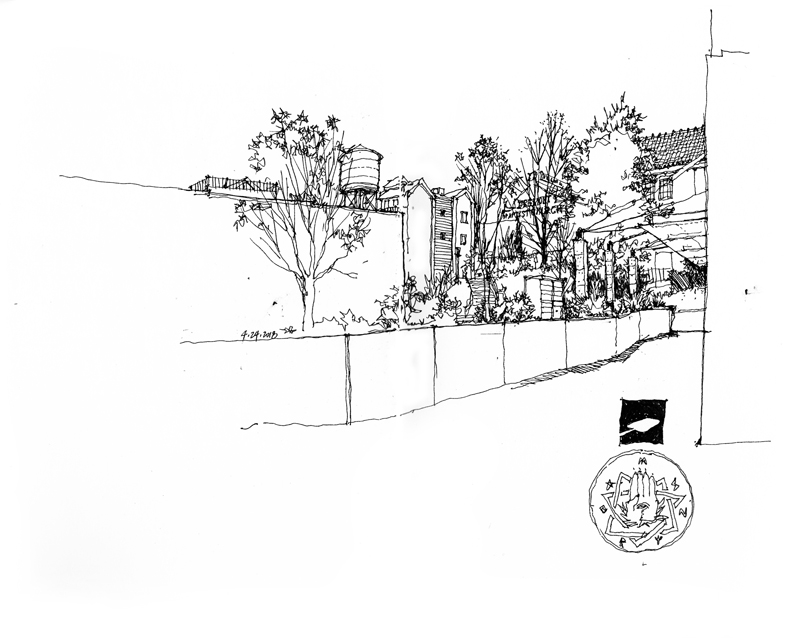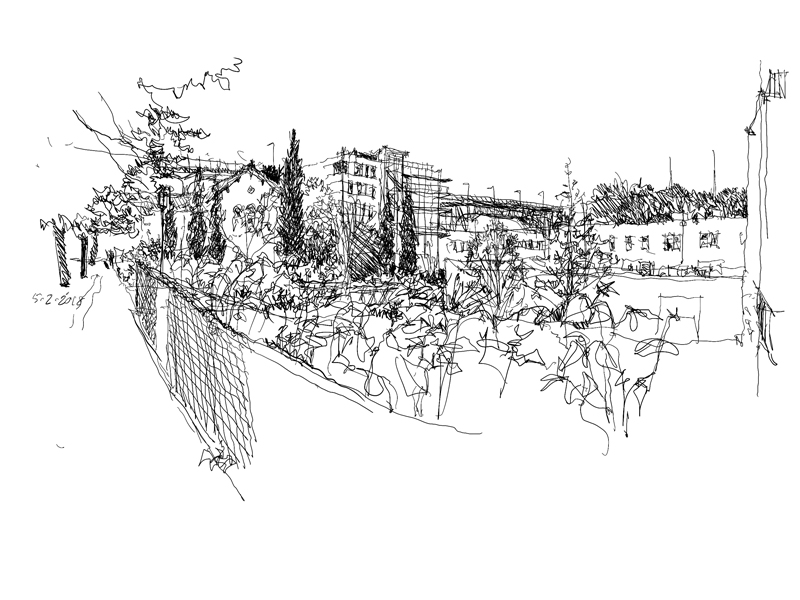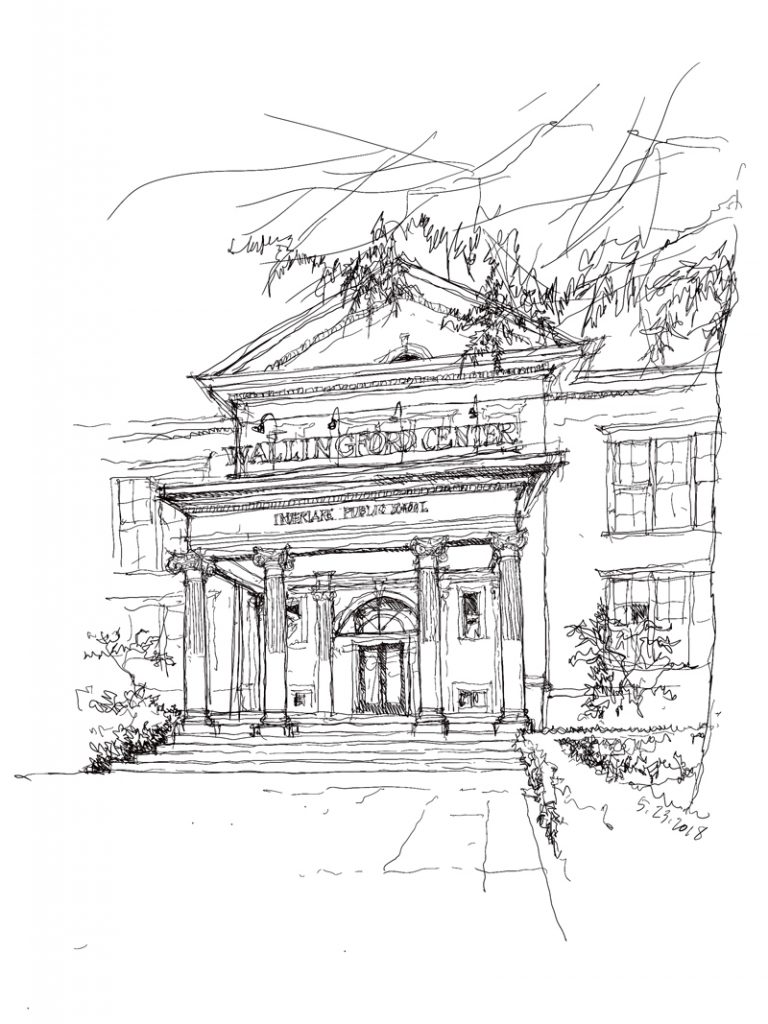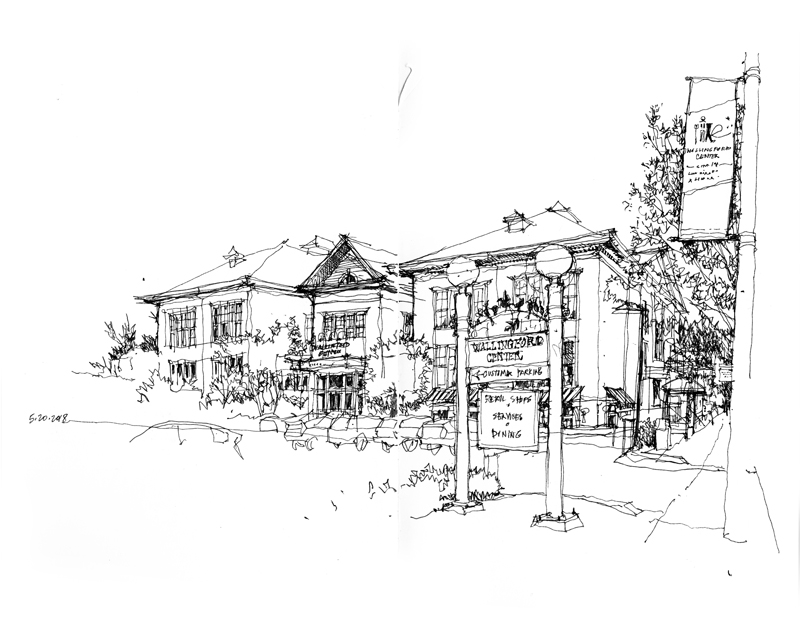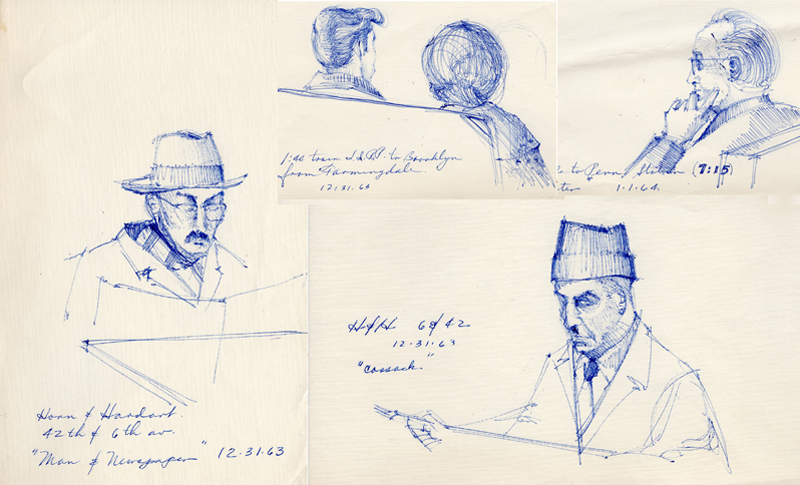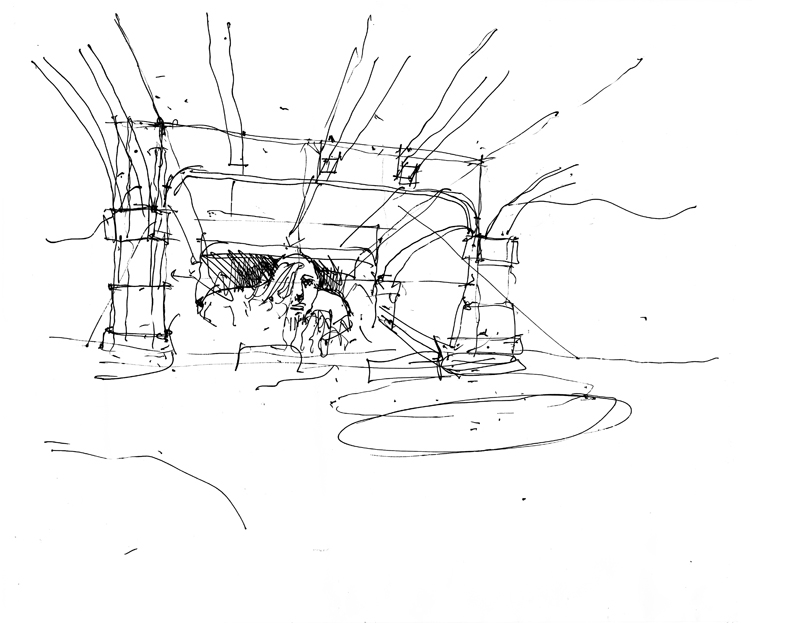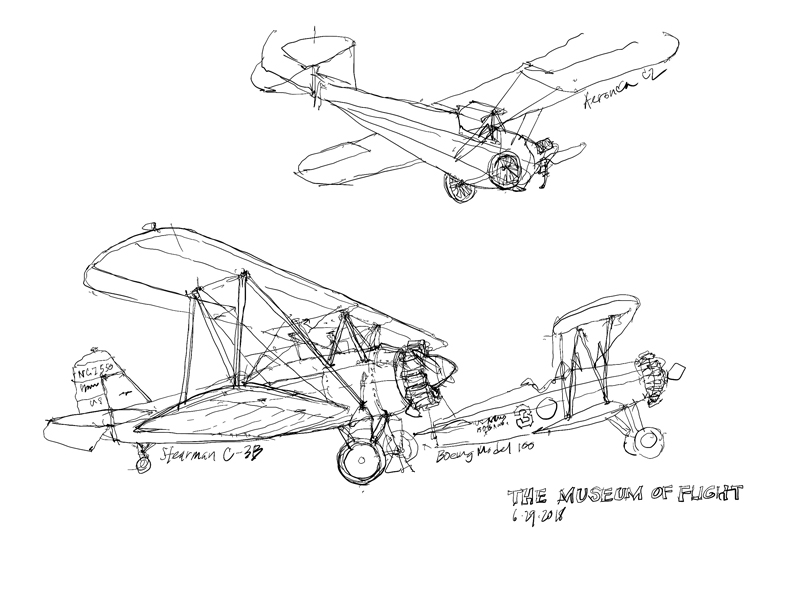 These are just a few of the incredible collection of historic planes at the Museum of Flight, which touts itself as “the largest independent, nonprofit air and space museum in the world.” The first sketch is of the Stearman C-3B, Boeing Model 100, and Aernoica C2. The second is a Vietnam-era McDonnell F4C Phantom II, and the third is a very foreshortened view of the Curtiss JN-4D “Jenny.”
These are just a few of the incredible collection of historic planes at the Museum of Flight, which touts itself as “the largest independent, nonprofit air and space museum in the world.” The first sketch is of the Stearman C-3B, Boeing Model 100, and Aernoica C2. The second is a Vietnam-era McDonnell F4C Phantom II, and the third is a very foreshortened view of the Curtiss JN-4D “Jenny.”
In each view, I started with the aspect of the longitudinal axis of each plane before building up the three-dimensional form of the fuselage and wing structures along this axis. A major difficulty in drawing these views is being able to capture how much the fuselages and wing structures are foreshortened. Below is a short video clip showing this process.


